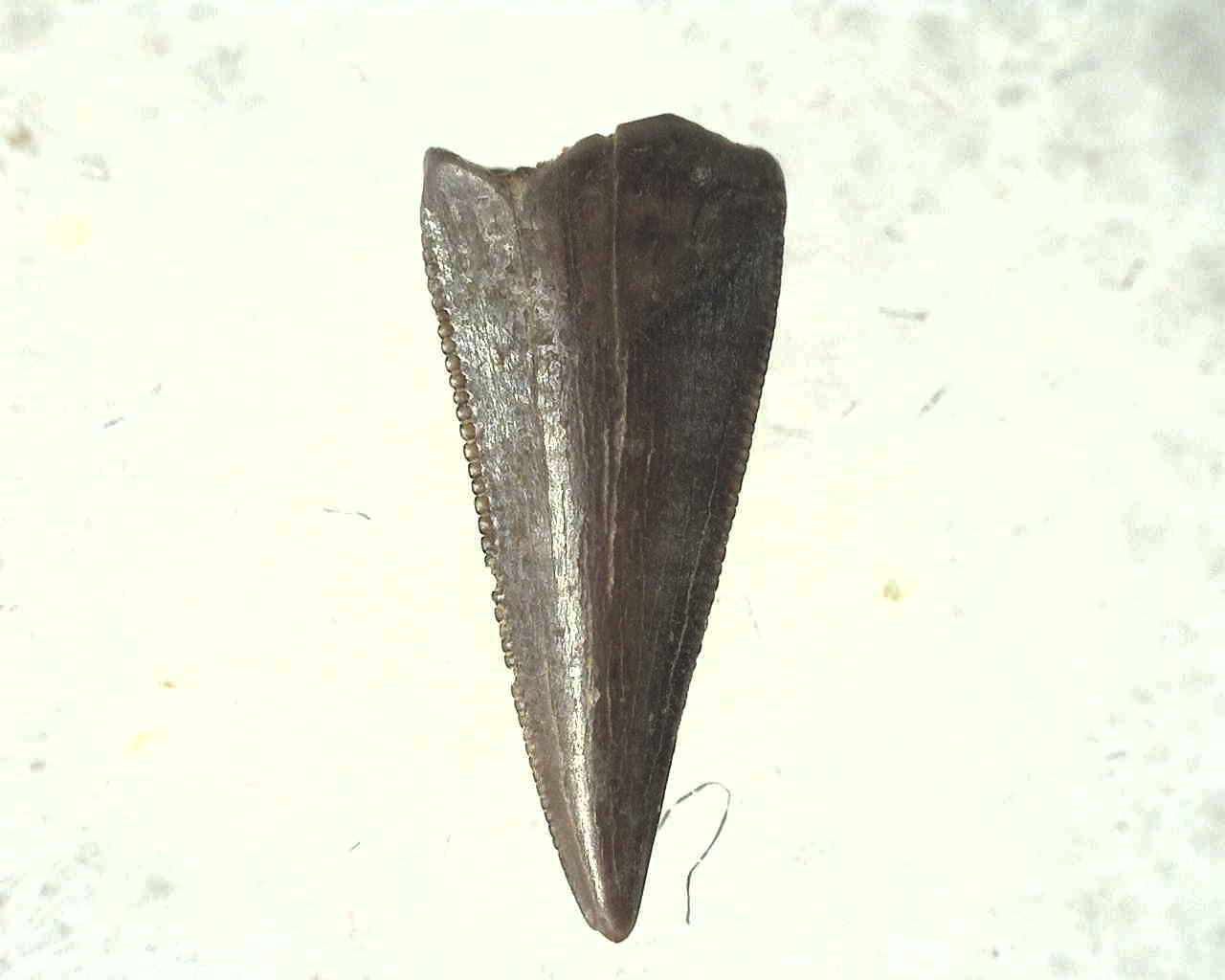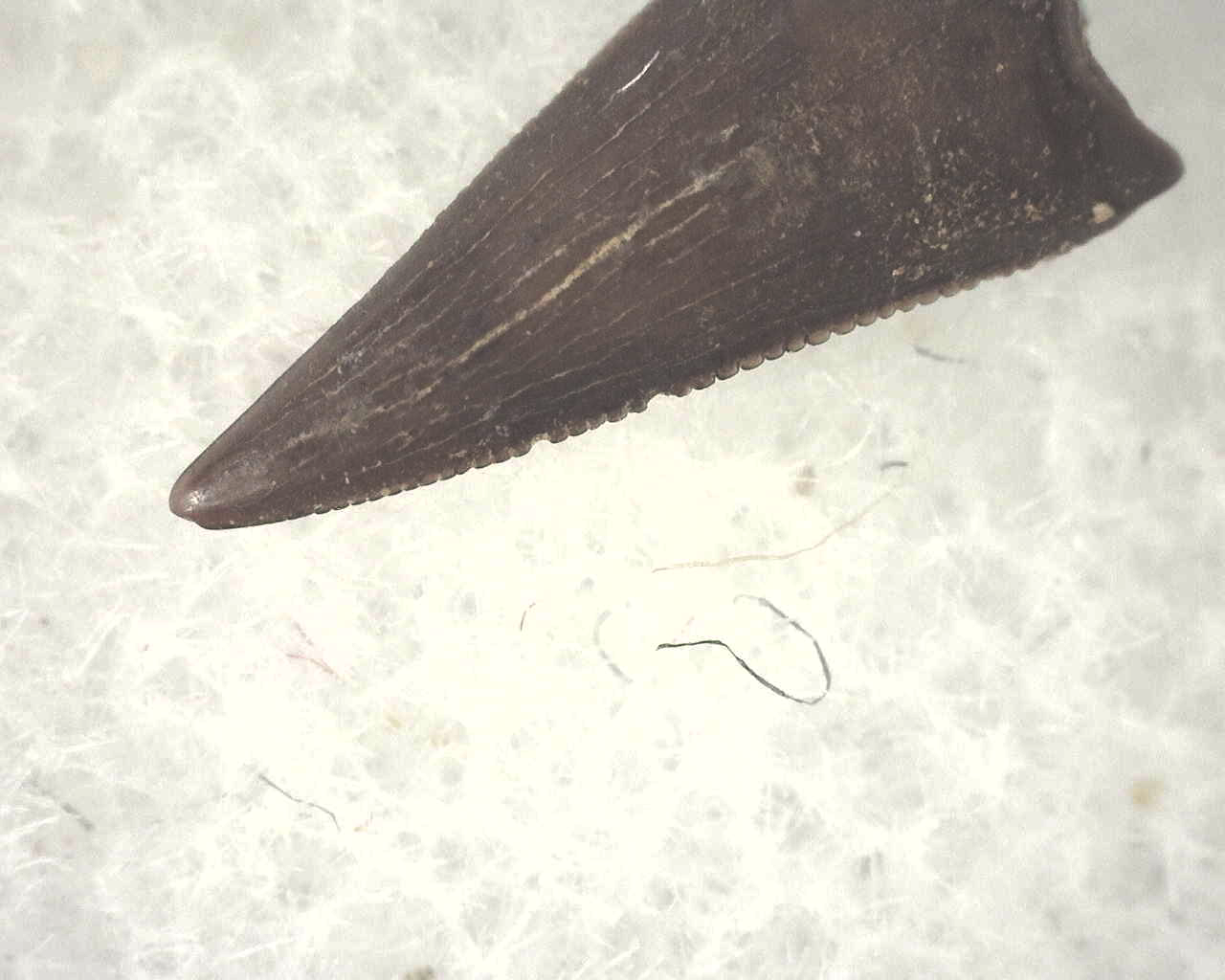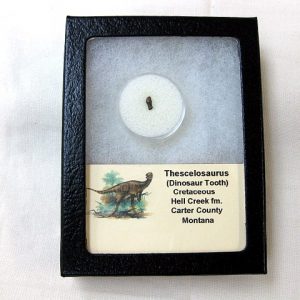Description
- Richardoestesia Dinosaur Tooth
- Cretaceous Age
- Hell Creek Formation
- Powder River County, Montana
- Specimen measures approx. 1/4″ long and will come in a 1.25″ gem jar
Richardoestesia is a medium-sized (~100 kg) genus of theropod dinosaur from the late Cretaceous Period of what is now North America. It currently contains two species, R. gilmorei and R. isosceles.
The jaws are slender and rather long, 193 millimeter, but the teeth are small and VERY FINELY SERRATED with five to six denticles per millimeter. The serration density is a distinctive trait of the species.
Richardoestesia-like teeth have been found in many Late Cretaceous geological formations, including the Horseshoe Canyon Formation, the Scollard Formation, Hell Creek Formation, and the Lance Formation (dated to about 66 million years ago). Similar teeth have been referred to this genus from as early as the Barremian age (Cedar Mountain Formation, 125 million years ago).
Richardoestesia was a medium sized carnivore from North America. It has been found in a variety of formations: Judith River Formation, Horseshoe Canyon Formation, and Scollard Formation from Alberta Canada; Lance Formation from Wyoming, Aguja Formation from Texas, and Cedar Mountain Formation from Utah. It lived in the Campanian or Barremian age of the Late Cretaceous, about 76.5-66 million years ago. It is known from lots of teeth and some lower jaw bones. There is very little known about it given these sparse remains. And, given that the teeth have been found in a variety of locations and time periods, it is also doubtful that they all belong to the same genus or species. What we do know is that it had slender, long jaws with lots of small, finely serrated teeth. It was probably a small theropod and also probably was in troodontidae or dromaeosauridae, but it can only firmly be placed in coelurosauria.








